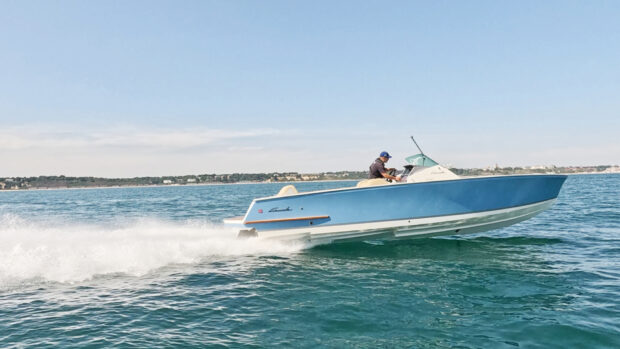Backing into a berth is rapidly becoming an essential skill for motor boat owners, John Mendez explains how to get it right every time
In the Mediterranean almost all berths are arranged for stern-to mooring and even in the UK the height of many modern craft makes it impossible to get on or off anywhere other than the bathing platform.
It’s not really that different to entering a berth bow first, however, the shift of pivot point and more restricted view astern can make it harder to master. The same principles apply; go as slowly as you can whilst still maintaining control and get the boat balanced on the wind and tide as you approach, so that if it’s not going to plan you can stop and start again.
I like to get a view of the whole berth before entering it, even if that entails going past it and then turning around before berthing. With a twin-shaft boat I always centre the helm and use alternate engines to back in slowly but with an outdrive boat I also use small-wheel movements so as not to give the bow any scope for getting out of shape.
The most important point to remember when moving astern is that the boat’s pivot point shifts aft from its usual position when helming in ahead to a new position roughly a third of the way in from the stern. This means that the bow will move twice as far in the opposite direction to the stern.
For example, when trying to back in towards a floating pontoon on your port side, engaging the starboard engine astern will pull the stern of the boat towards the pontoon but it will also swing the bow out to starboard and towards any neighbouring boat.
Most of us find berthing easier when the wind is blowing us onto the berth, so on a light wind day it makes sense to start with the wind blowing the bow towards the berth and control its drift downwind either by being positive when driving into the berth and/or using the bow thruster (if fitted).
However, when berthing on a windy day, I would always start from a downwind position and use the momentum of the boat towards the wind to overcome it rather than risk being blown in too quickly.
You will need to be positive and use the bow thruster to stop the bow swinging too far upwind, rather than fighting the wind whilst trying to bring the bow back under control. Spotting the cross wind and knowing how it’s likely to affect your bow allows you to make a better judgement of which side to approach from.
The hardest berthing manoeuvre is when the wind is bang on the nose. A stern-to berth and a decent breeze on the bow can be a real challenge. Lastly any tidal movement needs to be taken into account, as whilst concentrating on the stern of the boat, the tide can catch you out.

VIDEO: How To – Berth an IPS boat
Though berthing using a joystick is deemed easy, there are still some key techniques to employ when using IPS

Video: How To – Berth single-handed
Leaving or arriving at at a berth is one of the biggest boating challenges. In this video we show you










